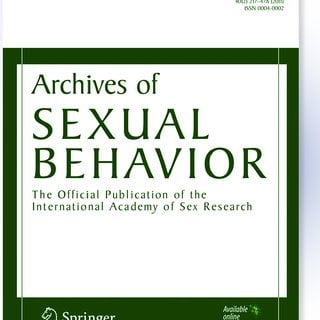Excerpt:
ERPs revealed that individuals with a high tendency for PPU exhibited larger probe-locked P1 amplitudes following masked pornographic images (valid condition) compared with masked neutral images (invalid condition). Additionally, PPU symptom severity correlated positively with the P1 amplitude difference between valid and invalid conditions. These results highlight the automaticity of attentional capture by pornographic stimuli and support the hypothesis of an addiction-related attentional bias during preconscious processes.
Arch Sex Behav
Wang, J., Li, H. (2024). https://doi.org/10.1007/s10508-024-02965-8
Abstract
Attentional bias toward addiction-related stimuli has been implicated in the development and maintenance of addiction disorders. Several previous studies have reported an attentional bias toward pornographic cues in individuals with problematic pornography use (PPU). Since attentional bias can occur without conscious awareness, the purpose of this study was to use electroencephalography to examine whether individuals with a high tendency for PPU exhibit attentional bias at the level of the preconscious processing. Event-related potentials (ERPs) were recorded while male participants with high (n = 24) and low (n = 23) levels of subclinical PPU performed a masked version of the dot-probe task measuring attentional bias toward subliminally presented pornographic stimuli. Behavioral data revealed that participants from both groups with high and low tendencies for PPU reacted faster to probes replacing pornographic images than to probes replacing neutral images. ERPs revealed that individuals with a high tendency for PPU exhibited larger probe-locked P1 amplitudes following masked pornographic images (valid condition) compared with masked neutral images (invalid condition). Additionally, PPU symptom severity correlated positively with the P1 amplitude difference between valid and invalid conditions. These results highlight the automaticity of attentional capture by pornographic stimuli and support the hypothesis of an addiction-related attentional bias during preconscious processes. The implication of these findings for understanding the clinical phenomenon of out-of-control addictive behavior are discussed.
